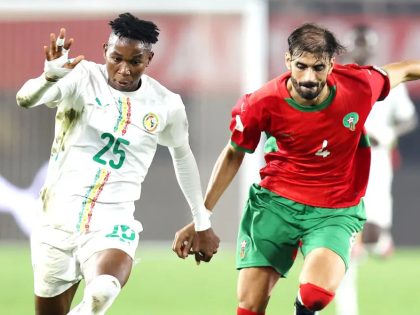What kind of city is an African architecture for?
Despite a chronic housing and land shortage, Liberia's capital has not seen militant urban social movements.

Image credit Danny Hoffman.
Children ran up and down the central stairwell as Martin led me and a small group of companions around the Liberia Broadcasting System (LBS) building on the outskirts of Liberia’s capital, Monrovia. It was the start of the rainy season. Martin lived among approximately 80 families in the ruins of the brutalist LBS, one of the largest structures in the city. Most had been in the LBS more than ten years, having fled the countryside for the relative safety of the city during Liberia’s long war.
One could clearly see how the building’s residents orchestrated their own architecture within the huge frame, carving and creating spaces as they negotiated their needs given the limits of the space. Looking down from the stair into the ground floor, pools of standing green water were a reminder of the challenges of these creative reworkings. In the torrential Liberian rains, the building’s inhabitants are violently exposed to the elements.
“A building like this should be productive,” muttered Ibrahim, a young man who had accompanied me on similar walk-throughs of heavily damaged buildings around the city. Ibrahim and I were touring the LBS in the course of researching a book on Monrovia’s modernist built environment and the urban future. In each location, he said almost exactly the same thing. It became a kind of mantra he repeated in all the city’s modernist ruins. “If you leave a building like this to the people,” he said, “it will rot and become useless.”
Ibrahim’s negative assessment of the LBS occupation represents a challenge to some of the most progressive thinking in architecture and urban design today. A good deal of the popular, scholarly, and practitioner literature on the modern city seeks to validate occupations like those of the LBS and to make it the model for new grassroots forms of architecture and urbanism. In this literature it is the work of squatters and other organic intellectuals re-imaging failed modernist architecture like Caracas’ Torre David — “the improvised home for a community of over 800 families living in an extra-legal and tenuous occupation that many called a vertical slum” — that is the most hopeful and productive for thinking about the urban future. When so much of formal urban design today is geared toward speculative real estate capital and commercial interests, a certain fetishization of the unplanned and improvisatory strategies of the urban poor has taken hold.

That romantic view of the urban future is not one shared by many Monrovians today, and certainly not one they are willing to fight for. Despite a chronic housing and land shortage, Monrovia has not seen the militant urban social movements that have emerged in cities across Latin America, North Africa, and parts of Southeast Asia. In fact, even veterans of Liberia’s war, men who continue to threaten to take up arms in the pursuit of a better future, are remarkably passive on the subject of Monrovia’s built environment. When hundreds of ex-combatants and their families were evicted from the old Ministry of Defense building, a space in which most had lived for more than a decade, they put up no real resistance. Martin said much the same of the LBS. Though they had lived there for years, and though they had few alternatives in the overcrowded city, no one wanted to claim the LBS as their own.
But if Ibrahim and others like him reject the idea of architecture without architects, there is also a disturbing element in what he proposes as an alternative. What Monrovia needs, Ibrahim argued, is someone who can forcefully impose a vision of the city and its built environment from above, rather than below. Africa’s early modernist architectural heritage was overwhelmingly state driven, but (at least rhetorically) it consisted of projects meant to symbolically unify the nation through cutting edge design and grandiose urban forms. By contrast, Ibrahim felt that the city’s infrastructure would be “productive” when it could be used as a tool for making the flow of money more efficient and the generation of profit more fluid. Ibrahim seemed to feel that the city and its built environment could only serve the nation under an authoritarian figure powerful enough to reclaim spaces like the LBS and make it part of his personalized network of political, economic, and social patronage. It is a disturbingly common sentiment in a city buffeted by years of poor administration, warfare, and, most recently, economic collapse under the scourge of the Ebola epidemic. To work as a city, according to this line of thinking, what Monrovia needs is not pubic works and infrastructure so much as a return to the crony capitalism (and accompanying state violence) of the Charles Taylor regime, Liberia between 1997 and 2003. (This perhaps makes some sense of the veiled promises of current Liberian Vice-President Jewel Howard-Taylor to restore the brutal order that characterized the rule of her former husband.)
The architectural historian Andres Lepik recently argued that what is presently missing from African architecture, and by extension from a more progressive and appropriate vision of the African city, are high quality reference buildings. There is no doubt a good deal of truth in that. But a more important absence may be a serious critical conversation about what kind of city an African architecture is for.



















